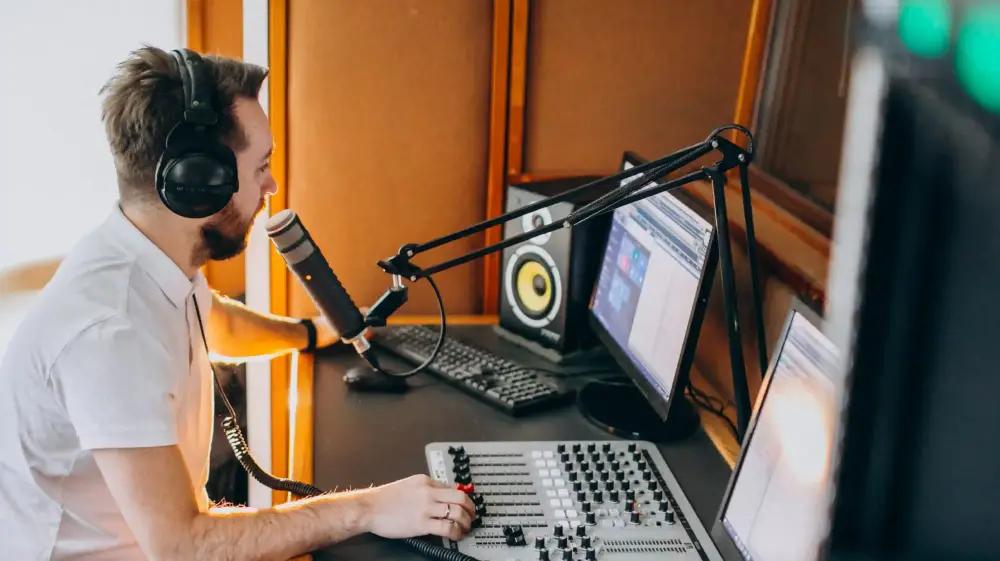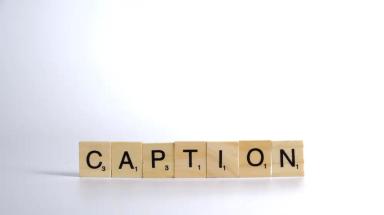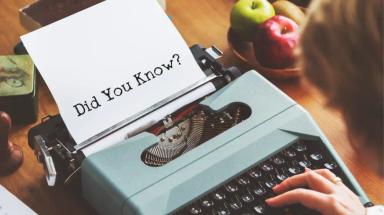Summary
Audio transcription is the process of conveying the audible content of the audio into a written one. There are typically many ways to transcribe an audio and each type of audio has its own requirements. It takes a professional transcriptionist to be able to accurately transcribe audio with no errors.
What does transcription mean?
Transcription typically means the transformation of audible content to written, readable content. It takes a professional who knows how to accurately convert audible content to written content while including all details and information. The concerned transcriptionist should work in his/her fields of expertise to avoid possible mistakes that are related to spelling and homophones.
Get our transcription services now
What can be transcribed?
In general, all audible contents can be transcribed no matter what they are. This includes meetings, voice recordings, conferences, documentaries, movies, series, short videos, interviews, talk shows, the news, podcasts, phone calls, conversations, lectures, speeches, workshops, webinars, statements, consultations, sessions, etc.
What fields use transcription?
Transcription is used in all fields and for various purposes. The fields that can benefit from transcription include legal, medical, academic, media, technical, scientific, nutrition, engineering, business, psychology, and more.
What is audio transcription?
Audio transcription is the transformation of an audible audiovisual file to a written text. It can either be a simple audio or even a video file that should be transcribed. Audio transcription can be used for many reasons and for different fields such as the legal field for example in the case of evidence that should be well understood. Audio transcription should be completed by a professional transcriptionist who knows how to handle such tasks.
Get our audio transcription services now
How do I transcribe a recording to text?
To transcribe a recording to text, it is highly advised to leave it to a professional who has previous experience in these tasks. However, it is not impossible to do it yourself. You just need to follow these steps:
- Sit in a quiet place. Sitting in a quiet place is the first step one should consider since it is the only way that guarantees that everything that is being said is clear.
- Be well equipped. Have your dictionaries and everything that you might need to be able to understand what is being said. For example, if what you’re transcribing is a medical recording, then you will need to prepare medical dictionaries and glossaries to be able to look up words and their spellings.
- Download/ upload the file: Now, the transcription process starts. You should first download the file and wait for it to be ready.
- Listen to the recording. After downloading the recording, you should listen to the recording for the first time to identify the field, the type, and the duration of the recording.
- Have a second listen. It is always advised to listen to the recording more than once before starting to transcribe. This way, you ensure that you have understood everything and that you are totally prepared.
- Start transcribing: After listening more than once to the recording, and identifying the field, type, and duration of it, you are ready to start transcribing the recording. During this stage, you are going to need dictionaries and glossaries to be able to identify words and write them correctly.
- Proofreading: After the transcription process comes the proofreading process. This means that you read what you have transcribed to make sure that there aren’t mistakes related to grammar, punctuation, or spelling. This even helps you check typos.
- Listen and read at the same time and for the last time. After the proofreading process comes the final stage of transcription, which is to listen to the recording and read what you have transcribed at the same time. This way, you will make sure that the transcription is accurate and that nothing is missing.
Medical Transcription: What Is It and Why Is It Important?
How do I transcribe a video recording?
If you don’t want to refer to a professional, then you surely can transcribe a video recording yourself. However, you must know that it requires patience and some specific skills.
- Here are steps that will help you transcribe a video recording yourself:
- Set up a noiseless location. Choose a location where there is minimal to no noise at all to be able to focus and pay close attention to the video recording.
- Prepare your dictionaries. You will need to prepare your dictionaries to help you write correctly and to be able to identify words that aren’t clear.
- Download the video recording: This is the part where you are called to download the video recording on a quality device to be able to watch what you’re transcribing at the same time. It is vital since it helps you understand what is being said even more.
- Noise-canceling headphones: You are required to use noise-canceling headphones to be able to listen and understand what is being said. This assists you in avoiding mistakes that are closely related to comprehension.
- Watch the video recording: After everything is ready, you too become ready to start transcribing the video recording. However, you should watch the whole video recording to be able to identify the field, and the type, and to provide yourself with additional dictionaries or glossaries if they are needed. You can watch the video recording several times before starting.
- Transcription process: You can start transcribing the video recording while paying close attention to all that is being said.
- Proofreading: After you have finished with the transcription, you should read what you have transcribed to make sure that it doesn’t include mistakes or errors.
- Watch and read for the last time: The last step of the transcription of a video recording is to watch the video and read the transcription at the same time to make sure that it is accurate.
Get our video transcription services now
How do you transcribe an audio interview?
To transcribe an audio interview, there are a few steps you need to follow:
- Silent work location: First things first, you should sit in a silent place where there are no noises or distractions.
- Download the audio interview: You then download the audio interview and wait till it’s fully downloaded and ready to be heard.
- Listen to the audio interview: While listening to the audio interview, you have to identify all speakers and the change of speakers during the interview, along with the field and the type of the interview.
- Start transcribing: After having identified the speakers and everything else that needs to be identified, you become ready to start with the transcription process.
- Proofreading: The most important step comes after the transcription process, which is proofreading. You read the written content and you make sure that it’s one hundred percent error-free.
- Listen and read: This is the final step, where you listen to the audio interview and read the written content at the same time. That way, you make sure that you have mentioned everything.
Uncovering the Story: A Complete Guide to Interview Transcription
How do you transcribe a conference?
Transcribing a conference might be challenging for some, that’s why it is always advised to have a professional conference transcriptionist complete this task.
Here are the steps to follow when transcribing a conference:
- Quiet work office: To transcribe a conference, transcriptionists must start by choosing a quiet place to work in. This helps them clearly understand everything that is being said.
- Download the conference file: Downloading the conference file is the second step. After being downloaded, the work can start.
- Noise-canceling headphones: It is always advised to use noise-canceling headphones when transcribing a conference since it makes it possible to clearly hear everything and to understand every word, especially since conferences might include distracting voices.
- Have a first listen: Transcriptionists then listen or watch the conference before starting since it allows them to identify the speakers, the theme, and the duration of the conference.
- Transcription process: The transcription process starts and the transcriptionists listen and transcribe what is being said.
- Proofreading: Proofreading comes right after the transcription process. It helps transcriptionists correct minor mistakes such as typos and errors related to punctuation, spelling, and/or grammar.
- Listen/ watch and read: Transcriptionists listen or watch the conference and read the written content at the same time to make sure that it is accurate and correct, and that there aren’t any details missing.
Transcription Unlocked: Answering the Most Frequently Asked Questions
How do you transcribe phone calls?
To transcribe a phone call, one must have excellent listening skills as the sound might not be clear. Therefore, here are the steps to follow if one wishes to transcribe a phone call:
- A super quiet place: Transcribers should start by sitting in a super quiet place where no sounds or noises might be heard.
- Download the phone call file: Downloading the phone call file comes right after sitting in a quiet place. After having it successfully downloaded, transcriptionists can proceed.
- Noise-cancelling headphones: It is very important to use noise-canceling headphones while transcribing a phone call since it will make it possible for transcriptionists to clearly hear and understand everything.
- First listen: Transcriptionists listen to the whole phone call before starting to be able to identify the speakers, the subject of the call, and the duration.
- Transcription: Transcription can finally start and during the process, transcriptionists can pause and rewind when needed.
- Proofreading: After the transcription process, transcriptionists proofread the written content to make sure that there aren’t mistakes related to spelling, grammar, punctuation, or even typos.
- Listen and read: The last step of transcribing a phone call is the listening and reading process which helps transcriptionists identify missing information and details. After this, the transcription of the phone call can be delivered.
How to become a certified medical transcriptionist
How do you transcribe a virtual meeting?
Transcribing a virtual meeting requires the following steps:
- Quiet office: Before anything else, transcriptionists must sit in a quiet office where there are no noises and distractions to be able to accurately transcribe the virtual meeting which might be challenging and hard to transcribe at times.
- Download the file of the virtual meeting: Transcriptionists start by downloading the file of the virtual meeting, and after being successfully downloaded, they will be ready to start.
- Listen to the file: Transcriptionists are highly advised to start by listening to the file of the virtual meeting. That way, they can identify the change of speakers, the purpose of the meeting, and the duration.
- Transcription process: After identifying the required factors, transcriptionists can successfully start transcribing the virtual meeting.
- Proofreading: Directly after finishing with the transcription, transcriptionists must always proofread the written content to make sure that there are no minor errors or mistakes.
- Final touch: The final step of transcribing a virtual meeting is to listen to the meeting one last time while reading the written content. This way, transcriptionists make sure that everything is accurate and nothing is missing.
From the Courtroom to the Page: Guidelines for Legal Transcription
How do you transcribe an audio conversation?
Transcribing an audio conversation requires the following steps:
- Sitting in a quiet office: To start with the transcription of an audio conversation, transcriptionists should start by choosing a quiet office to sit in.
- Downloading the file: The second step is to download the file that contains the audio conversation.
- Noise-canceling headphones: It is very important to use noise-canceling headphones while transcribing an audio converter to be able to clearly understand everything.
- Listen to the audio conversation: Transcriptionists listen to the whole audio conversation before starting to be able to identify speakers, change of speakers, the subject of the conversation, and its duration.
- Transcription process: After identifying what needs to be identified, the transcription process starts.
- Proofreading: Once finished, transcriptionists proofread the written content to make sure it is error-free.
- Listen and read: The last step is to listen to the audio conversation and read the written content at the same time to make sure it is accurate.
Get our Arabic to English - English to Arabic Translation
Is there a program that converts audio to text?
There indeed are programs that convert audio to text. These programs include Amazon Transcribe, Google (option in Google Docs), OTranscribe, and many more.
However, it is highly advised to have a professional handle the transcription task since only an experienced transcriptionist can accurately convert the audio to text while paying close attention to grammar, punctuation, and spelling mistakes.
Get a quote now and let our translators bridge the gap between languages!
How will Leaders Translation Company help you transcribe your text?
At Leaders, our transcriptionists enjoy no less than eight years of experience in transcription. Not to mention that your file will be handled by a qualified transcriptionist who has similar experience in the type of content and its field. In no time, transcriptionists at Leaders are able to professionally convert your audible files to written files. Also, transcriptionists at Leaders are linguists who have deep knowledge of grammar, spelling, and punctuation, and who are able to provide you with flawless transcription services as desired.
Upload your file now and watch it seamlessly transcribe into any language of your choice!






